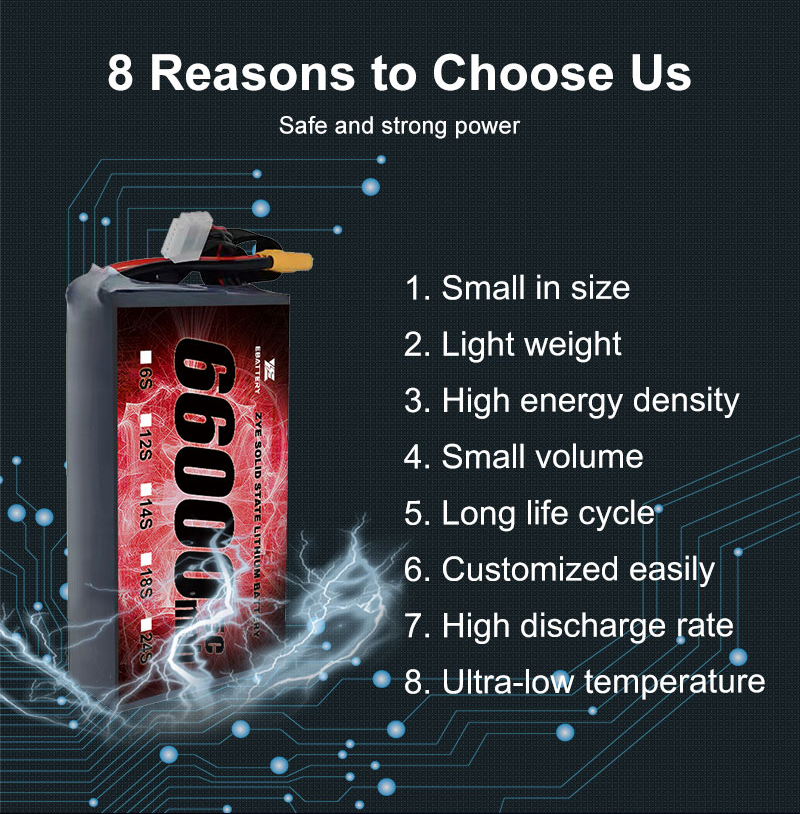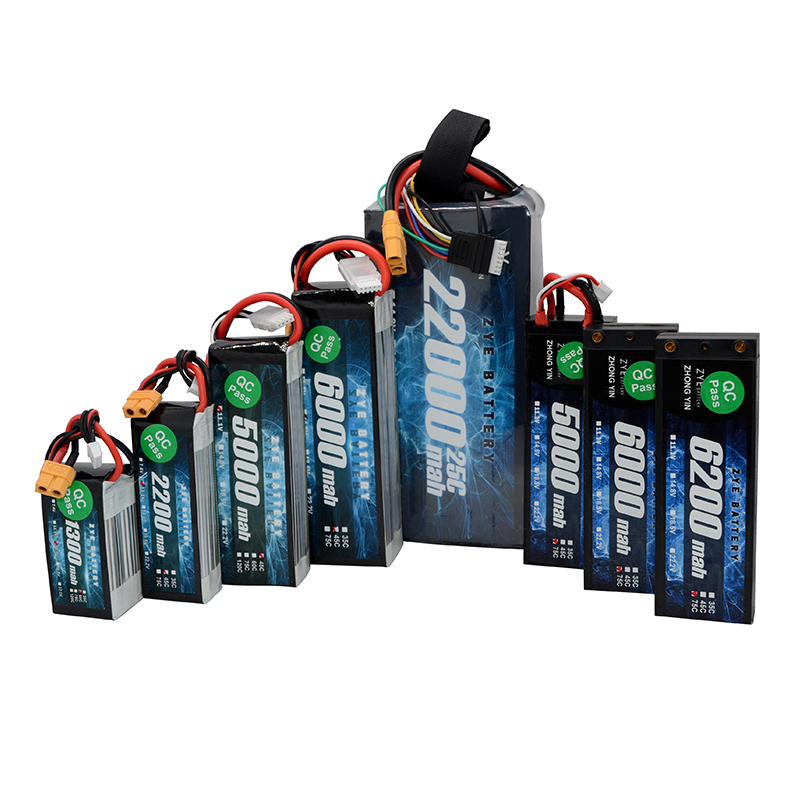What are common issues and maintenance tips for Lipo Batteries?
2025-08-05
LiPo batteries, short for lithium polymer batteries, have become the go-to choice for powering a wide range of electronic devices due to their high energy density and lightweight properties.

While lipo-battery technology offers numerous benefits, proper care and maintenance are essential to ensure longevity and safe operation:
Balancing Cells: With six cells in series, it's crucial to keep all cells balanced. Use a balance charger to ensure each cell maintains an equal voltage, preventing overcharging of individual cells.
Proper Storage: Store LiPo batteries at about 50% charge in a cool, dry place. Avoid fully charging or discharging the battery for long-term storage, as this can degrade the cells.
Avoiding Over-Discharge: Never discharge a LiPo battery below 3V per cell. Most devices have built-in cutoffs, but it's important to monitor voltage, especially in high-drain applications.
Physical Care: LiPo batteries are sensitive to physical damage. Avoid puncturing, bending, or crushing the battery. If the battery swells or shows signs of damage, discontinue use immediately.
Proper Charging: Always use a charger specifically designed for LiPo batteries and set to the correct cell count (6S for a 22.2V battery). Never leave charging batteries unattended.
Understanding the manufacturing process and proper care of lipo battery units can help users maximize their performance and lifespan. These powerful energy sources continue to push the boundaries of what's possible in portable and high-performance devices.

Understanding Overcharging
Overcharging occurs when a battery continues to receive current after it has reached its full capacity. For an 11.1V lipo-battery, each cell has a maximum safe voltage of 4.2V, meaning the total battery voltage should not exceed 12.6V when fully charged.
Impact on Charging Time
Attempting to overcharge a LiPo battery doesn't actually increase the charging time. Instead, a properly functioning charger will stop or significantly reduce the charging current once the battery reaches its full capacity. This is part of the CC/CV charging method mentioned earlier.
Consequences of Overcharging
While modern chargers are designed to prevent overcharging, using an inappropriate charger or a malfunctioning one can lead to overcharging. The consequences can include:
1. Reduced battery capacity and lifespan
2. Increased internal resistance, leading to poor performance
3. Swelling or "puffing" of the battery
4. In extreme cases, fire or explosion
Preventing Overcharging
To avoid overcharging and ensure optimal charging times:
1. Use a high-quality LiPo charger with balance charging capabilities
2. Never leave batteries charging unattended
3. Regularly inspect your batteries and charger for signs of damage or wear
4. Follow the manufacturer's guidelines for charging current and voltage
5. Consider using a LiPo safe bag or container during charging for added safety

The Role of Balance Charging
Balance charging is a crucial feature in modern LiPo chargers that helps prevent overcharging and ensures each cell in your lipo-battery is charged to the same level. This process can slightly increase overall charging time but significantly enhances battery safety and longevity.
Ready to optimize your LiPo battery charging experience? Contact us today at coco@zyepower.com for personalized advice and product recommendations tailored to your specific needs.
























































